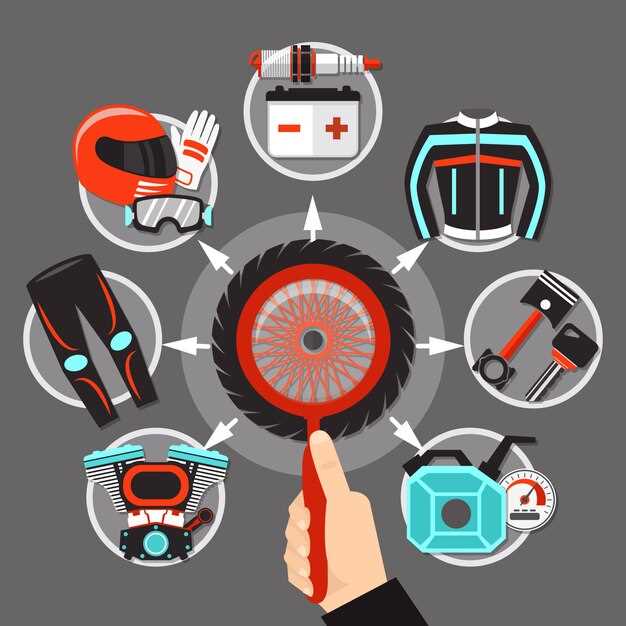
When it comes to choosing wheels for your motorcycle or bicycle, understanding the differences between spoke and cast wheels is essential. Each type of wheel boasts unique characteristics that affect performance, aesthetics, and maintenance. Knowing these distinctions can significantly influence your riding experience, whether you prioritize speed, durability, or visual appeal.
Spoke wheels, characterized by their intricate design made of multiple metal spokes connecting the rim to the hub, offer enhanced flexibility and shock absorption. They are often favored for off-road riding where terrain challenges demand resilience. However, the maintenance required for spoke wheels can be demanding, as the spokes may need regular tension adjustments to maintain optimal performance.
On the other hand, cast wheels are crafted from a single piece of metal, providing a solid and sturdy structure. Their manufacturing process allows for a variety of shapes and styles, appealing to those who value aesthetics. While cast wheels generally require less maintenance than their spoke counterparts, they may not perform as well on rugged terrains due to their rigidity.
This guide aims to provide a comprehensive comparison of spoke and cast wheels, exploring their respective advantages, disadvantages, and ideal use cases. By the end, you’ll be better equipped to make an informed decision that aligns with your riding style and preferences.
Pros and Cons of Spoke Wheels for Various Riding Styles

Spoke wheels have been a popular choice for cyclists for decades, offering a unique balance of performance and aesthetics. However, their suitability can vary greatly depending on the riding style. Below are the advantages and disadvantages of spoke wheels across different types of cycling.
Advantages:
1. Strength and Durability: Spoke wheels are generally strong due to their design, which distributes weight evenly across the wheel. This makes them ideal for mountain biking and off-road riding where impacts with obstacles are common.
2. Repairability: In the event of damage, spoke wheels can often be repaired rather than replaced. A broken spoke can usually be fixed on the spot, making them a convenient choice for long-distance touring and adventure rides.
3. Weight Considerations: Lightweight spoke wheel designs are available, enhancing performance in racing situations. Competitive cyclists may benefit from this aspect when it comes to climbing and sprints.
4. Aesthetic Appeal: Many riders prefer the classic look of spoke wheels, which can complement the aesthetics of vintage and custom-built bicycles, attracting enthusiasts in the retro cycling communities.
Disadvantages:
1. Maintenance Requirements: Spoke wheels require regular truing and maintenance to ensure they remain in good condition. This can be cumbersome for casual riders who prefer a low-maintenance bike setup.
2. Weight Variability: While some spoke wheel designs are lightweight, others can be heavier than cast wheels, particularly in durable configurations. This may hinder performance for competitive road cyclists seeking every advantage.
3. Aerodynamics: Spoke wheels generally have higher aerodynamic drag compared to cast wheels, making them less suitable for triathlon or time-trial events where maximum aerodynamics is crucial.
4. Vulnerability to Damage: Though repairable, spokes can be vulnerable to damage from hard impacts or improper adjustments. This is a consideration for riders who frequently navigate harsh terrains.
In conclusion, the choice of spoke wheels should align with the specific demands of the riding style. While they offer notable advantages in terms of strength, repairability, and aesthetics, potential drawbacks such as maintenance requirements and performance trade-offs must also be taken into account.
Durability and Maintenance: Cast Wheels Explained
Cast wheels are known for their robust construction and durable nature, making them a popular choice for various vehicles. Unlike spoke wheels, which rely on individual spokes and a hub structure, cast wheels are formed from a solid piece of material, typically aluminum or alloy. This design contributes to their strength and resistance to deformation under stress.
One of the primary factors contributing to the durability of cast wheels is their manufacturing process. The casting technique allows for greater material cohesion, which minimizes the risk of weaknesses that can occur in welded or bolted structures. Additionally, cast wheels are less likely to suffer from issues such as spoke fatigue or failure, which can lead to dangerous situations while driving.
Maintenance of cast wheels is relatively straightforward. They do not require adjustments or realignment as frequently as spoke wheels, which can become loose over time. Regular cleaning and inspection are essential to maintain their appearance and performance. Ceramic coatings or sealants can be applied to protect the surface from corrosion and keep them looking new.
However, cast wheels can be prone to cosmetic damage such as scratches or dents from road hazards. While these do not typically affect performance, they can impact the aesthetic appeal of the wheels. Some owners may opt for refinishing or repainting to restore the visual integrity of their cast wheels.
In conclusion, cast wheels offer impressive durability paired with low maintenance needs. Their solid construction provides excellent performance and longevity, making them a suitable option for drivers seeking reliability and ease of upkeep.
Performance Differences: How Wheel Type Affects Handling and Speed

The type of wheels on a vehicle significantly influences its handling characteristics and speed capabilities. Spoke wheels and cast wheels each have unique designs that impact performance in various driving conditions.
Spoke wheels, commonly seen in bicycles and some motorcycles, offer a lightweight construction that enhances agility and responsiveness. Their design allows for more flexing at the rim, which can absorb shocks effectively during uneven terrains. This flex can improve cornering performance, as the wheel can conform to the surface of the road, providing better grip and stability. However, this flexibility might come at the cost of rigidity, making high-speed maneuvering less predictable.
In contrast, cast wheels are typically heavier and more rigid. They are manufactured using a more robust process, resulting in a solid structure that provides excellent stability at high speeds. This rigidity allows for more precise handling, especially during aggressive driving or at higher speeds, making cast wheels the preferred choice for performance vehicles. However, the added weight can reduce acceleration and impact braking distance, particularly in situations that require quick responsiveness.
Additionally, spoke wheels may promote better heat dissipation due to the open structure, which can be beneficial during prolonged use or racing conditions. This can lead to more consistent performance over time. Conversely, cast wheels may retain heat due to their solid form, which can affect brake performance if not managed properly.
Ultimately, the choice between spoke and cast wheels should be guided by the intended use of the vehicle. For those prioritizing weight savings and agility for specific racing scenarios, spoke wheels provide distinct advantages. On the other hand, for drivers seeking stability, durability, and performance at high speeds, cast wheels are often the superior option.

